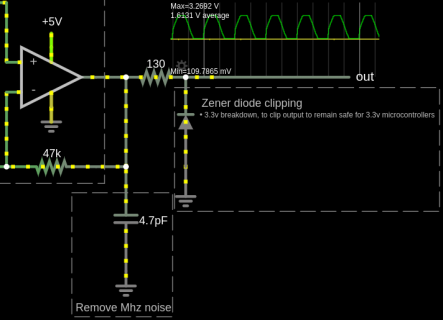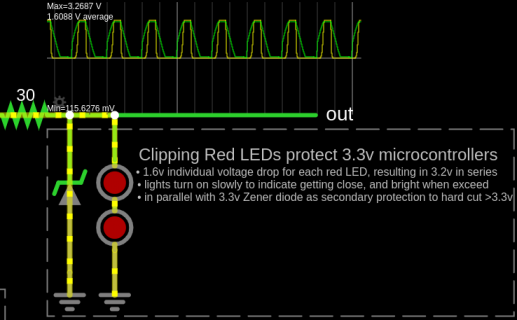thank you for your explanations. I'll try swapping my various opamps with this circuit side by side to get a better idea on the precision and the noise.
And thanks for the tip about probe attenuation...I'm finding when just looking at a voltage divider network (of two 1Mohm resistors dividing the 3.3V supply), that switching the 10x attentuation is giving me a little more correct measurement of 1.57 V for midpoint, while not using attenuation on probes gives a too low value of 1.52 V for midpoint.
Basically you almost never use x1 on a x10 probe - primarily because the bandwidth is grossly restricted in x1 mode and the probe tip capacitance is large. x1 is only ever of use for very small signals in a low impedance circuit at low frequency - otherwise x1 is more likely to alter the circuit behaviour than measure it (lots of scope - pun intended - for confusion...)
With a bipolar opamp with say 400nA bias current, even two 100k resistors to the rails gives a DC voltage error of 100k/2 x 0.4µ = 20mV at the input, so you have to watch out for this - though here I think you now are close enough to mid rail to be practical - the last 5--10% isn't necessarily worth worrying about.




